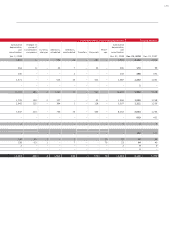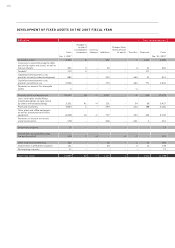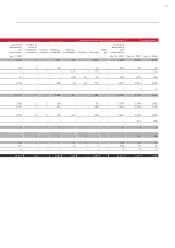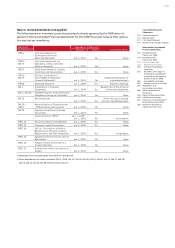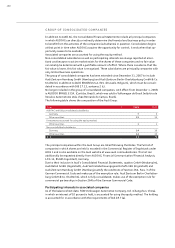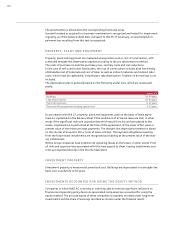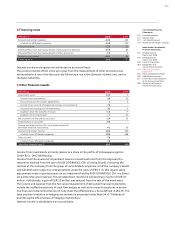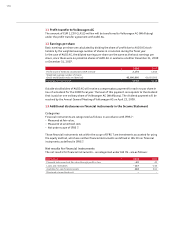Audi 2008 Annual Report Download - page 204
Download and view the complete annual report
Please find page 204 of the 2008 Audi annual report below. You can navigate through the pages in the report by either clicking on the pages listed below, or by using the keyword search tool below to find specific information within the annual report.
185
Consolidated Financial
Statements
170 Income Statement
171 Balance Sheet
172 Cash Flow Statement
173 Statement of Changes in Equity
Notes to the Consolidated
Financial Statements
174 Development of
fixed assets 2008
176 Development of
fixed assets 2007
178 General information
183 Recognition and
measurement principles
183 Recognition of income
and expenses
183 Intangible assets
184 Property, plant
and equipment
184 Investment property
184 Investments accounted for
using the equity method
185 Impairment tests
185 Financial instruments
187 Other receivables and
financial assets
187 Deferred tax
187 Inventories
188 Securities, cash and
cash equivalents
188 Provisions for pensions
188 Other provisions
188 Management’s estimates
and assessments
189 Notes to the Income
Statement
196 Notes to the Balance Sheet
209 Additional disclosures
227 Events occurring subsequent
to the balance sheet date
228 Statement of Interests
held by the Audi Group
IMPAIRMENT TESTS
Fixed assets are tested regularly for impairment as of the balance sheet date. Impairment tests
are carried out for development activities and property, plant and equipment on the basis of
expected product life cycles, the respective revenue and cost situation, current market expecta-
tions and currency-specific factors.
Expected future cash flows to fixed assets are discounted with country-specific discount rates
that adequately reflect the risk and amount to at least 9 percent before tax.
Impairment loss pursuant to IAS 36 is recognized where the recoverable amount, i.e. the higher
amount from either the use or disposal of the asset in question, has declined below its carrying
amount.
FINANCIAL INSTRUMENTS
Financial assets and liabilities (financial instruments) are recognized and measured in accor-
dance with IAS 39.
On this basis, financial assets are divided into the following categories according to the purpose
of their acquisition:
– financial assets measured at fair value through profit or loss,
– loans and receivables,
– held-to-maturity investments,
– available-for-sale financial assets.
No financial assets in the category of “held-to-maturity investments” are in use within the Audi
Group.
Financial liabilities are allocated to the following categories depending on the reason for their
acquisition:
– financial liabilities measured at fair value through profit or loss,
– financial liabilities measured at amortized cost.
Where financial instruments are purchased or sold in the customary manner, they are recog-
nized using settlement date accounting, in other words at the value on the day on which the
asset is delivered.
Initial measurement of financial assets and liabilities is carried out at fair value.
Subsequent measurement of financial instruments is dependent on the category assigned to
the instrument in accordance with IAS 39 and is carried out either at amortized cost (using the
effective interest method) or at fair value.
Financial instruments are abandoned if the rights to payments from the investment have ex-
pired or been transferred and the Audi Group has substantially transferred all risks and oppor-
tunities associated with their title.
Evidence of the need for reclassification, and objective indicators for the impairment of a finan-
cial asset or group of financial assets, are reviewed on each balance sheet date.
Financial assets include both originated and derivative claims or commitments, as detailed
below.
Originated financial instruments
The “Loans and receivables” and “Financial liabilities measured at amortized cost” categories
include originated financial instruments measured at amortized cost. These include, in particu-
lar:
– loans advanced,
– trade receivables and payables,
– other current assets and liabilities,
– financial liabilities.


